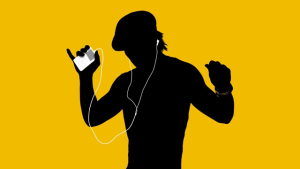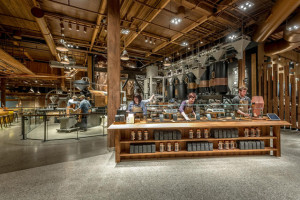Branding Lessons from Brand Giants
Two of the leading brands on the marketplace today – Apple and Starbucks – didn’t get to where they are by chance. Building (and maybe more important, maintaining) brands with their level of success requires firing on all brand cylinders and recognizing the importance of nailing the visual, verbal, research and strategy aspects of the brand.
In a recent article for Fast Company, brand and marketing specialist Alessandra Ghini shared a pair of branding lessons she learned during her time with both Starbucks and Apple. These two pieces of advice provide both insight and a hint of explanation to the successes of these brands.
Apple: “A product is a story, not a list of features.”
Ghini drives this point home while discussing how the advertising strategies for Apple essentially constricted what they could do within the ads, and pushed the branding to think outside of a fairly restrictive box in order to communicate their brand messaging. This is where the focus shifted from listing the features of a product and centered the content on the emotional aspect of both the individual product and the Apple brand. The iconic iPod commercials with the dancing silhouettes didn’t speak much to the “what” the iPod was, but more to the “how” in how it made the audience feel in its interactions.
Emotional branding, where a brand conjures a certain emotive feeling within the user, is something most brands strive to achieve. If you can establish your brand as one that not only has positive interaction but also a positive reaction, you have gained a leg up on the competition.
For the most part, purchasing decisions are emotionally driven, and consumers look for brands that make them feel a certain way or that they feel an emotional association with. Apple has become one of those brands – arguably, they have become THE emotional brand out there today. And it all starts with the brand stories they tell for each of their products.
Starbucks: “Big brands can shift fast, if the leader cedes power.”
Static thinking can doom a brand. The phrase “that’s how we’ve always done it” can spell the end of relevance for even the best branding efforts. Markets change, consumer wants and needs evolve, media and advertising continuously update – the world is moving fast, and the brands who refuse to get on the train are going to be left behind.
 Even the most iconic, long-lasting brands need to adopt a culture of evolution, and this starts at the top – for Starbucks, that adoption began when founder Howard Schultz returned to the company and allowed for much of the brand refresh work to be completed by those within the organization. His openness to change allowed the teams to strategize to develop what they felt was best for the brand moving forward – from an updated logo done mostly in-house to the overall brand strategy.
Even the most iconic, long-lasting brands need to adopt a culture of evolution, and this starts at the top – for Starbucks, that adoption began when founder Howard Schultz returned to the company and allowed for much of the brand refresh work to be completed by those within the organization. His openness to change allowed the teams to strategize to develop what they felt was best for the brand moving forward – from an updated logo done mostly in-house to the overall brand strategy.
Starbucks was able to position itself to take advantage of the changing marketplace in its industry – it strengthened its core by improving the coffee aspect of its business while expanding into a variety of spaces, including increasing food options and adjusting the customer experience. Some brands connect evolution with total overhauls, and fear the loss of their core brand – this isn’t the case. If you have a piece of your brand that has carried you for years, an updated brand strategy can help bring your entire brand up to the same level.
Addison Whitney is a global branding firm with a passion for building strong brands.
To learn more about Addison Whitney, visit our website at AddisonWhitney.com, or contact us here.